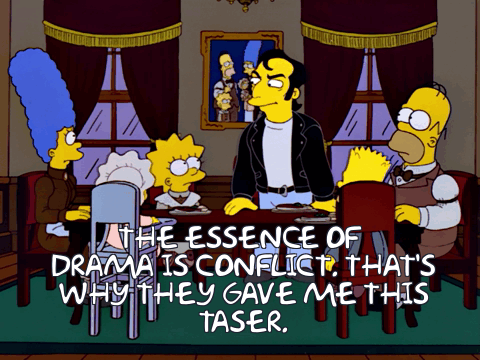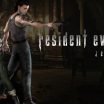Behind the Line: Video Game Violence, the Blame Game… (Origins)

I don’t normally like to talk political here, but over the past week we’ve seen the revival of blaming video games for real life violence. I’m tired of this, and anyone with any sense can see this argument for the bad faith garbage it is. I’m not here to debunk what we all know is false. As usual I want to look at something that I think is being overlooked and recognize the kernel of “truth” that people try to distort to make this argument. Why video games are thought of as inherently “violent”.
First of all, as I’ve spoken about before, the video game industry is, and has always been more than a little immature. Remember, “Death Race” was a thing. The point here was to try to run over pedestrians. Still not a “murder simulator” but not something you’d want to brag about to your mom.
But that’s just context. What people really point at is how all video games are about “killing” the bad guy, in one form or another. Why is that?
Early video games were extremely resource constrained. So what do you want to do when you want to add more emotional investment? How do you add some drama?

Can’t have Squiggy with a taser at every arcade cabinet, so… What’s a story that you can tell in 3 images that frames conflict?
- Princess
- Captured
- Rescue
This frames the protagonist, the antagonist, the conflict, and the stakes. You wouldn’t be wrong to call this reductive, or lazy, but at the same time beggars can’t be choosers. There are more tropes to establish conflict than “Damsel in Distress”, but martial conflict is fast to establish.
Games generally need some form of challenge. That means either sports like Rally X, puzzles like Breakout, or conflict like Popeye, Super Mario Brothers, Donkey Kong, Kung Fu, Double Dragon, Ghouls ‘n Ghosts, Dragon’s Lair, and so forth. All lean on the “Damsel in Distress”. Then there are other games that lean on other forms of martial conflict like Berzerk, Galaga, Misslie Command, Sinistar, BattleZone, Joust, Gauntlet, even Burger Time.
Is it wrong to use these tropes to set up a game? Generally speaking, no. In a vacuum of each individual title? Certainly not. Is there an issue when this becomes the default position for narrative and mechanic in video games in general? When the assumption is that if there isn’t some representation of violence (cartoonish, fantastic, or realistic) that it isn’t a game? That while we try to argue that games are art that games like “Gone Home” get flack and dismissed as “not a real game” because there’s no conflict… That’s certainly a problem.
It’s the over-reliance that gives any weight to the false argument that video games cause violence. It generates the impression that the medium is inherently fixated on violence. From there, it’s not hard to sell to people that games cause violence. This isn’t the fault of the games industry. Liars are responsible for their lies. It is, however, a sign that the games industry can do better, so let’s do better. I want to see the best we can do, and as a side benefit, it should help to shut them up.




![[PROTOTYPE]](http://www.enthusiacs.com/wp-content/uploads/2020/03/title-104x104.jpg)



Leave a Reply